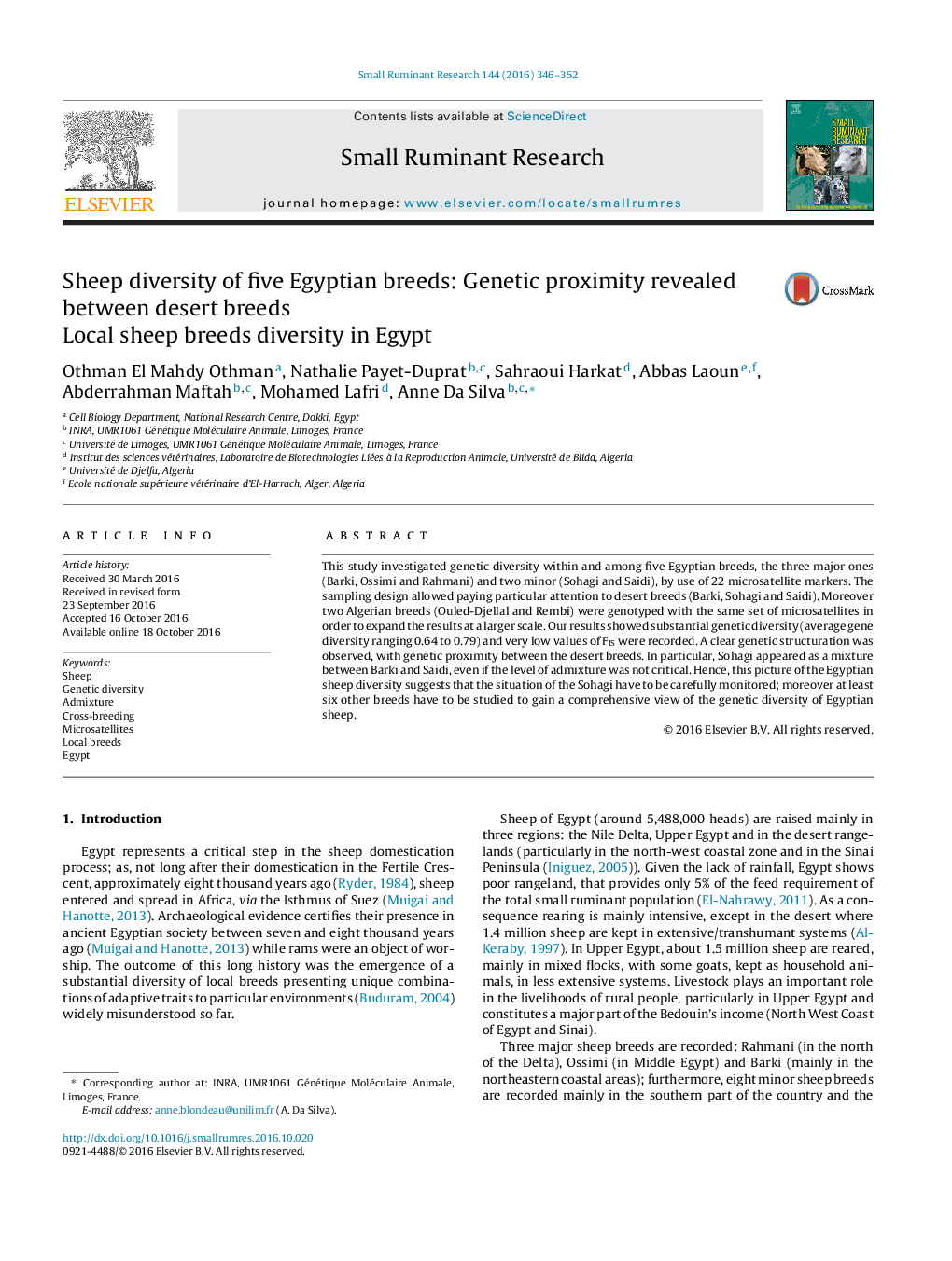| Article ID | Journal | Published Year | Pages | File Type |
|---|---|---|---|---|
| 5795290 | Small Ruminant Research | 2016 | 7 Pages |
â¢Five Egyptian sheep breeds investigated with 22 microsatellites.â¢A sampling focused on desert breeds showing strong adaptation to extreme conditions.â¢Two Algerian breeds genotyped to expand the results at a larger scale.â¢Clear genetic structuration, with particular genetic proximity between desert breeds.â¢Sohaghi appeared admixed and have to be carefully monitored.
This study investigated genetic diversity within and among five Egyptian breeds, the three major ones (Barki, Ossimi and Rahmani) and two minor (Sohagi and Saidi), by use of 22 microsatellite markers. The sampling design allowed paying particular attention to desert breeds (Barki, Sohagi and Saidi). Moreover two Algerian breeds (Ouled-Djellal and Rembi) were genotyped with the same set of microsatellites in order to expand the results at a larger scale. Our results showed substantial genetic diversity (average gene diversity ranging 0.64 to 0.79) and very low values of FIS were recorded. A clear genetic structuration was observed, with genetic proximity between the desert breeds. In particular, Sohagi appeared as a mixture between Barki and Saidi, even if the level of admixture was not critical. Hence, this picture of the Egyptian sheep diversity suggests that the situation of the Sohagi have to be carefully monitored; moreover at least six other breeds have to be studied to gain a comprehensive view of the genetic diversity of Egyptian sheep.
